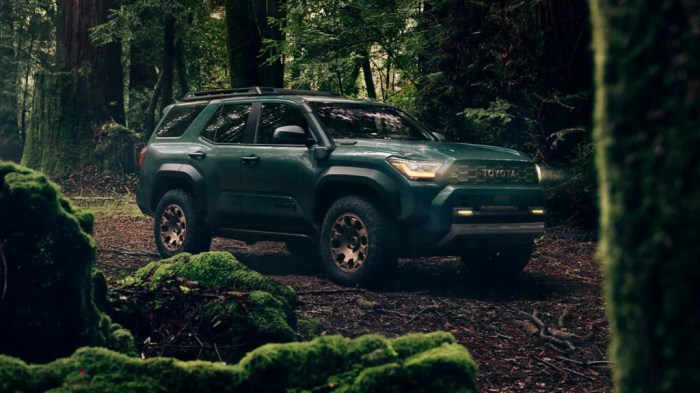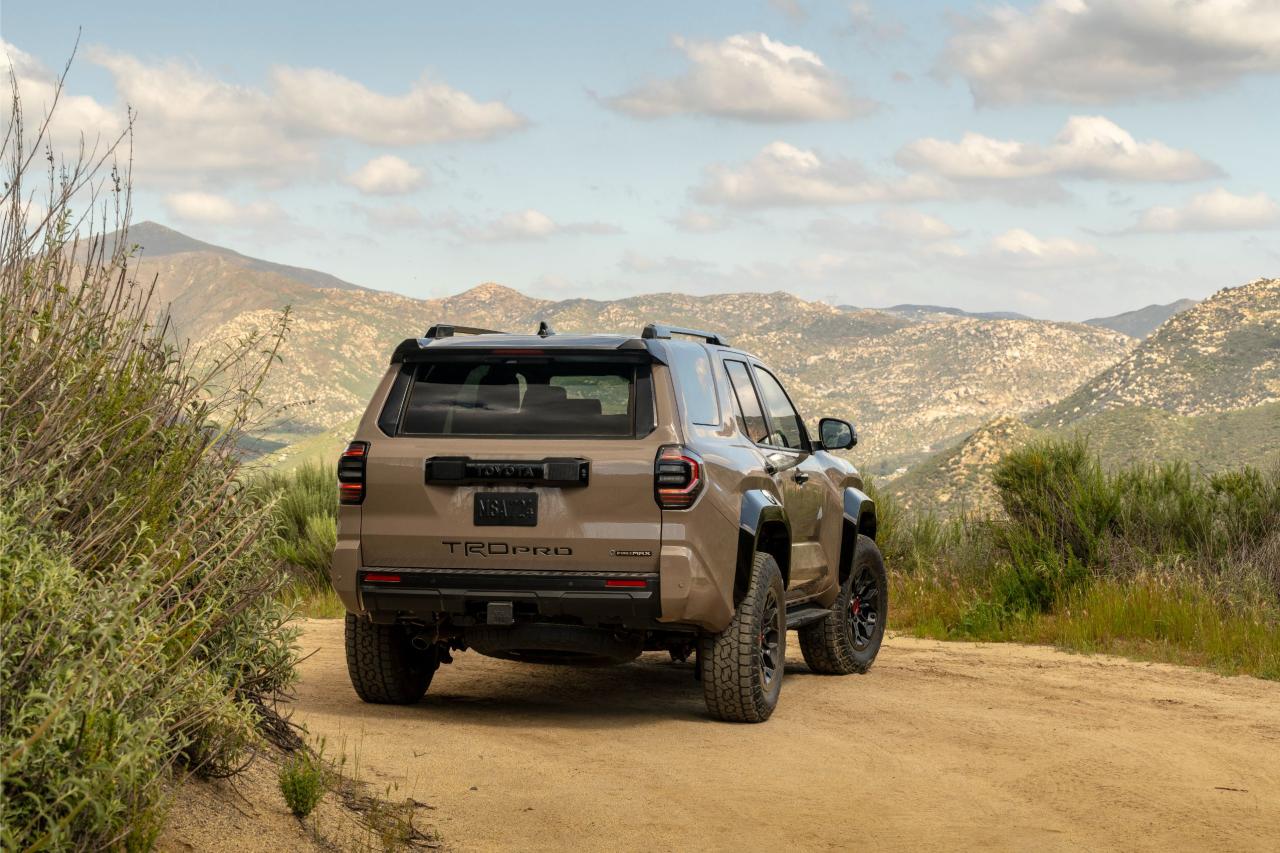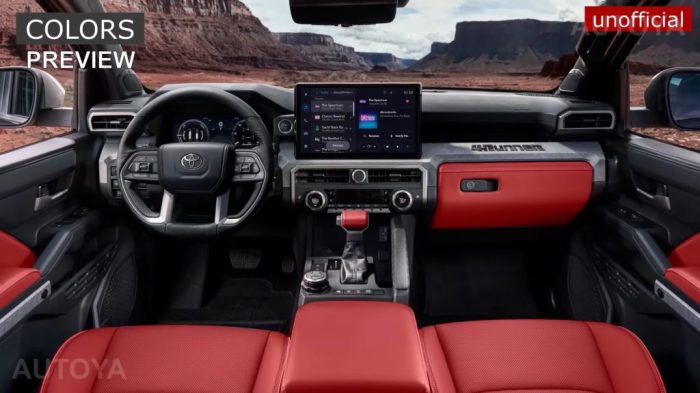The Toyota 4Runner, a rugged SUV known for its off-road capabilities, faces a significant test in winter conditions. Its performance in snow, ice, and freezing temperatures depends heavily on several factors, including tire selection, driver skill, and the specific 4Runner trim level. This detailed guide will explore the 2025 4Runner’s winter performance, providing insights for potential buyers and current owners alike.

Source: dealer.com
We’ll cover everything from its inherent strengths and weaknesses to practical tips for maximizing safety and handling in challenging winter weather.
Understanding the 2025 Toyota 4Runner’s Winter Capabilities
The 4Runner’s body-on-frame construction, while contributing to its off-road prowess, can also impact its on-road handling, especially in snow and ice. The higher center of gravity compared to unibody SUVs makes it more susceptible to rollovers in extreme conditions. However, its available four-wheel-drive system (4WD) and robust build provide significant advantages in snowy or icy situations. Let’s delve deeper into specific aspects:

Source: hearstapps.com
4WD System Performance in Winter
The 4Runner’s 4WD system, typically a part-time system, offers several driving modes designed to optimize traction. Understanding how to effectively utilize these modes – 4High and 4Low – is crucial for navigating winter roads. 4High provides increased traction on slippery surfaces, while 4Low is best reserved for extreme off-road situations or when tackling deep snow. However, remember that even with 4WD, maintaining safe speeds and driving cautiously are paramount.
Improper use of 4WD can actually reduce control in certain situations.
Tire Selection: The Unsung Hero
The choice of tires is arguably the most impactful factor influencing winter performance. All-season tires offer a compromise between summer and winter grip, but dedicated winter tires (also known as snow tires) are significantly superior in snow and ice. Winter tires feature a unique tread pattern and rubber compound designed for optimal grip in cold temperatures. Consider investing in a set of winter tires for the 4Runner if you live in an area with frequent snowfall or icy conditions.
Studded tires are also an option in extremely icy areas, offering even more grip, but may be illegal or restricted in certain regions. Always check your local regulations.
Electronic Stability Control (ESC) and Traction Control (TRAC)
The 2025 4Runner will undoubtedly include electronic stability control (ESC) and traction control (TRAC) systems as standard safety features. These systems work in tandem to help maintain control during slippery conditions. ESC monitors wheel speed and steering input, applying braking to individual wheels to prevent loss of control. TRAC helps prevent wheel spin by reducing engine power and applying braking to spinning wheels.
While these systems are highly effective, they are not a substitute for careful driving and appropriate tire selection.
Tips for Driving a 4Runner in Winter Weather
- Accelerate and decelerate slowly and smoothly: Sudden movements can easily cause loss of traction on snow or ice.
- Increase following distance: Stopping distances are significantly longer in winter conditions.
- Avoid sudden steering maneuvers: Gentle steering inputs are crucial for maintaining control.
- Know your limits: Don’t push the vehicle beyond its capabilities. If conditions are too hazardous, delay your trip.
- Check your tire pressure regularly: Cold temperatures can affect tire pressure.
- Carry an emergency kit: Include blankets, extra food and water, a first-aid kit, jumper cables, and a shovel.
- Stay informed about weather conditions: Check forecasts before traveling and be prepared for changing conditions.
Comparing the 4Runner to Competitors in Winter Performance
While the 4Runner excels in certain off-road situations, its direct competitors, such as the Jeep Wrangler and the Subaru Outback, might offer advantages in specific winter scenarios. The Wrangler, like the 4Runner, is a body-on-frame SUV, but its available features and different 4WD systems may result in varying winter performance. The Subaru Outback, with its all-wheel-drive system and lower center of gravity, might offer superior handling on snow-covered roads.

Source: daxstreet.com
Ultimately, the best choice depends on individual needs and priorities.
Frequently Asked Questions (FAQs)
- Q: Are snow chains necessary for a 4Runner in winter? A: Snow chains might be necessary in areas with extremely heavy snowfall or icy conditions, particularly on steep inclines. However, always check local regulations regarding chain use.
- Q: Does the 4Runner’s ground clearance help in winter? A: Yes, the 4Runner’s high ground clearance can be beneficial in deep snow, helping to prevent the vehicle from getting stuck. However, it doesn’t negate the need for appropriate tires and careful driving.
- Q: How does the 4Runner’s engine perform in cold weather? A: The 4Runner’s engine, like most engines, can experience slightly reduced performance in extremely cold temperatures. However, this is usually minimal with proper maintenance.
- Q: What is the best way to prepare my 4Runner for winter? A: Ensure your tires are in good condition (consider winter tires), check all fluids, and have your battery tested. Pack an emergency kit and familiarize yourself with your 4WD system.
- Q: Can I use 4Low on paved roads? A: Generally, no. Using 4Low on paved roads can damage the drivetrain and is not recommended.
Conclusion
The 2025 Toyota 4Runner, with its robust construction and available 4WD system, offers respectable winter capabilities. However, responsible driving practices, appropriate tire selection, and understanding the limitations of the vehicle are crucial for safe and efficient winter travel. By following the tips and guidelines Artikeld above, 4Runner owners can confidently navigate challenging winter conditions. Remember that proper preparation and cautious driving are key to a safe and enjoyable winter driving experience.
References
While specific 2025 4Runner data isn’t yet available, general information on winter driving safety and 4WD systems can be found on websites like:
- National Highway Traffic Safety Administration (NHTSA)
- Tire Rack
- Toyota Official Website (Check for specific 4Runner details once available)
Call to Action
Ready to conquer winter’s challenges with confidence? Schedule a test drive of the 2025 Toyota 4Runner today and experience its winter performance firsthand! Contact your local Toyota dealership for more information.
Top FAQs
Does the 2025 4Runner have heated seats and steering wheel?
Many trims offer heated seats and a heated steering wheel as optional or standard features. Check the specific trim level details.
What kind of tires are best for winter driving in a 4Runner?
Winter tires (with the three-peak mountain snowflake symbol) are highly recommended for optimal traction in snow and ice. All-weather tires offer a compromise but are not as effective as dedicated winter tires.
How does the 4Runner’s ground clearance affect winter driving?
High ground clearance helps navigate deeper snowdrifts and uneven terrain, providing an advantage in challenging winter conditions.
What safety features are available to aid in winter driving?
Features like traction control, vehicle stability control, and available advanced driver-assistance systems (ADAS) enhance safety in slippery conditions.
